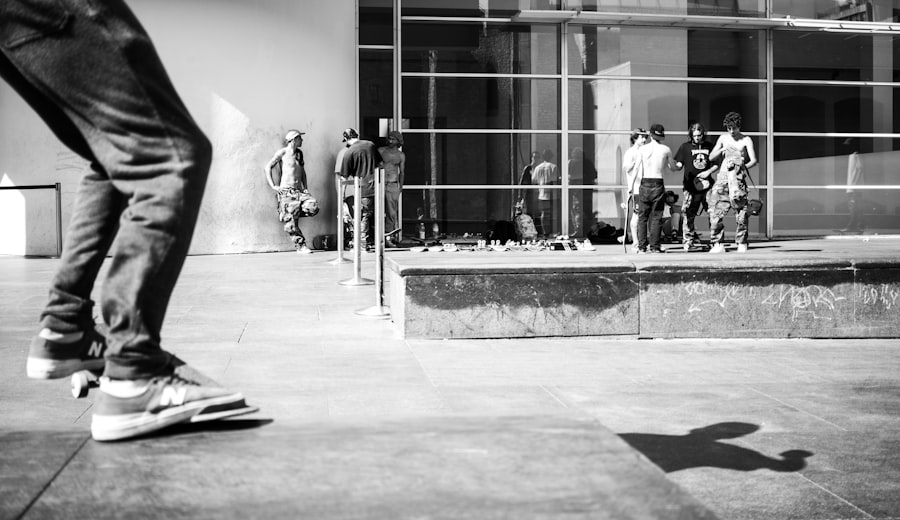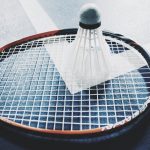Mastering the Art of Table Tennis
Description
Table tennis, often referred to as ping pong, is a fast-paced sport that combines agility, precision, and strategic thinking. Originating in England during the late 19th century as a parlor game, it has evolved into a highly competitive sport played worldwide.
The objective is to score points by making the ball land on the opponent’s side of the table in such a way that they cannot return it. Each match is typically played in a best-of-five or best-of-seven format, with players aiming to reach 11 points to win a game. The equipment used in table tennis is crucial to the game’s dynamics.
Players utilize paddles, which can vary significantly in terms of grip, weight, and rubber type, affecting how the ball is struck and the spin imparted. The ball itself is made of plastic and weighs only 2.7 grams, allowing for rapid exchanges and requiring quick reflexes. The standard table measures 2.74 meters long and 1.525 meters wide, with a height of 76 centimeters.
The International Table Tennis Federation (ITTF) oversees the regulations and ensures uniformity in competitions globally.
Key Takeaways
- Table tennis is a fast-paced game played on a small table with a lightweight ball and paddles.
- Mastering the serve is crucial in table tennis, as it sets the tone for the point and can give you a competitive edge.
- Different types of shots in table tennis include the forehand drive, backhand push, and topspin loop, each requiring specific techniques and practice.
- Understanding spin and control is essential for being able to anticipate and respond to your opponent’s shots effectively.
- Developing good footwork and movement is key to being able to reach the ball quickly and maintain a strong position during play.
Perfecting Your Serve
Types of Serves
There are various types of serves in table tennis, each designed to confuse or mislead the opponent. The backspin serve, topspin serve, and sidespin serve are just a few examples of the different types of serves that players can use to gain an advantage.
Mastering the Serve
Mastering the serve requires not only technical skill but also an understanding of how to read the opponent’s positioning and weaknesses. To perfect the serve, players must focus on both technique and deception. For instance, when executing a backspin serve, players should strike the ball with a downward motion while brushing the bottom half of the ball, imparting backspin and causing the ball to bounce low.
Practicing and Perfecting the Serve
Practicing serves from different angles and distances can enhance effectiveness, and varying the speed and placement of serves can keep opponents guessing. Players should aim to develop a repertoire of serves that they can use strategically throughout a match, ensuring they remain unpredictable and giving them an edge over their opponents.
Mastering Different Types of Shots

In table tennis, mastering various types of shots is vital for becoming a well-rounded player. The fundamental shots include forehand drives, backhand drives, loops, and smashes. Each shot has its own unique mechanics and applications during gameplay.
For example, the forehand drive is typically executed with a forward motion of the arm while maintaining a stable wrist position, allowing for powerful and accurate strikes. Conversely, the backhand drive requires a different grip and body positioning, emphasizing quick wrist action to generate speed. Loops are another essential shot in table tennis that involves imparting topspin on the ball.
This shot is particularly effective against backspin serves or defensive plays, as it allows players to lift the ball over the net while maintaining control. The mechanics of a loop involve a low-to-high swing path that brushes up on the ball, creating topspin that helps it dip quickly after crossing the net. Smashes are powerful shots aimed at finishing points quickly; they require precise timing and positioning to execute effectively.
By mastering these shots and understanding when to use them during matches, players can significantly enhance their overall performance.
Understanding Spin and Control
| Metrics | Value |
|---|---|
| Spin Rate | 2500 RPM |
| Control Percentage | 75% |
| Spin Efficiency | 90% |
Spin is one of the most fascinating elements of table tennis, adding complexity to every rally. Players can impart different types of spin—topspin, backspin, and sidespin—each affecting how the ball behaves upon contact with the table or paddle. Topspin causes the ball to dip quickly after crossing the net, making it challenging for opponents to return effectively.
Backspin, on the other hand, keeps the ball low and can lead to errors if opponents misjudge their timing or angle of attack. Control over spin is crucial for both offensive and defensive play. Players must learn how to read their opponent’s spin to respond appropriately; for instance, when facing a heavy topspin shot, one might need to adjust their paddle angle to counteract the spin effectively.
Additionally, players can use spin strategically to create opportunities for winning points. By varying spin on serves or during rallies, players can disrupt their opponent’s rhythm and force them into making mistakes. Developing an acute sense of spin not only enhances shot-making ability but also elevates overall gameplay.
Developing Footwork and Movement
Footwork is often an overlooked aspect of table tennis training; however, it plays a pivotal role in a player’s ability to execute shots effectively. Good footwork allows players to position themselves optimally for each shot, ensuring they can generate power and control while maintaining balance. The sport demands quick lateral movements as well as forward and backward shifts to respond to an opponent’s shots effectively.
To develop effective footwork, players should engage in specific drills that emphasize agility and speed. Ladder drills can improve quickness and coordination, while shadow practice—where players simulate strokes without hitting a ball—can help reinforce proper movement patterns. Additionally, practicing footwork in conjunction with shot execution can create muscle memory that translates into match situations.
Players should focus on maintaining a low center of gravity while moving swiftly around the table; this not only aids in balance but also prepares them for explosive movements when necessary.
Improving Your Strategy and Tactics

Strategic thinking is essential in table tennis; it involves analyzing both your own strengths and weaknesses as well as those of your opponent. Developing a game plan before entering a match can provide clarity on how to approach different situations during play. For instance, if you know your opponent struggles with high-spin shots or has difficulty returning serves that land deep in their backhand corner, you can tailor your strategy accordingly.
Tactics may also shift throughout a match based on how each player adapts to the other’s style. For example, if an opponent begins to anticipate your serves or shots effectively, it may be necessary to change your approach mid-game by introducing new spins or altering shot placement. Additionally, understanding when to play aggressively versus defensively can be crucial; sometimes playing conservatively allows you to wait for an opportunity to capitalize on an opponent’s mistake rather than forcing an error prematurely.
Mental Preparation and Focus
Mental preparation is often as important as physical training in table tennis. The sport demands intense concentration and quick decision-making under pressure; thus, developing mental resilience can significantly impact performance levels during matches. Visualization techniques are commonly employed by athletes across various sports; players can mentally rehearse their strokes or visualize successful rallies before stepping onto the court.
Moreover, maintaining focus during matches is essential for executing strategies effectively. Distractions—whether from external noise or internal thoughts—can lead to lapses in concentration that may result in unforced errors or missed opportunities. Techniques such as mindfulness meditation or breathing exercises can help players stay grounded during high-pressure situations.
Establishing pre-match routines that promote relaxation and focus can also enhance mental readiness when facing opponents.
Practicing and Training Techniques
Effective practice is fundamental for improvement in table tennis; structured training sessions that incorporate various elements of skill development yield better results than random play. Players should aim for a balanced training regimen that includes serving practice, shot drills, footwork exercises, and match simulations against different opponents. Incorporating technology into training can also provide valuable insights into performance metrics such as speed, spin rate, and shot accuracy.
Video analysis allows players to review their technique critically; identifying areas for improvement becomes easier when one can observe their form in action. Additionally, practicing with partners who challenge your skills can foster growth; playing against individuals with different styles exposes players to diverse strategies and shot-making techniques. Regularly participating in competitive matches is equally important for honing skills under pressure; this experience helps players adapt their training techniques based on real-game scenarios while building confidence in their abilities.
By committing to consistent practice routines that encompass all aspects of the game—from technical skills to mental preparation—players can steadily progress toward achieving their goals in table tennis.
If you’re a fan of Table Tennis, you may also be interested in reading about the popular mobile game Garena Free Fire. This action-packed battle royale game has taken the gaming world by storm, offering intense gameplay and exciting challenges for players. Check out this article to learn more about Garena Free Fire and see how it compares to the fast-paced world of Table Tennis.
FAQs
What is table tennis?
Table tennis, also known as ping-pong, is a sport in which two or four players hit a lightweight ball back and forth across a table using small bats.
What are the basic rules of table tennis?
The basic rules of table tennis include serving the ball diagonally over the net, allowing the ball to bounce once on each side of the table, and scoring points when the opponent fails to return the ball.
What equipment is needed to play table tennis?
To play table tennis, players need a table tennis table, table tennis bats (also known as paddles or rackets), table tennis balls, and a net.
What are the health benefits of playing table tennis?
Playing table tennis can improve hand-eye coordination, reflexes, and balance. It also provides a good cardiovascular workout and can help improve mental acuity.
What are the different types of table tennis shots?
Common table tennis shots include the forehand drive, backhand drive, topspin, backspin, and smash. Players use a combination of these shots to outmaneuver their opponents.
What is the history of table tennis?
Table tennis originated in England in the late 19th century as an indoor version of lawn tennis. It has since become a popular sport worldwide and is an Olympic event.





